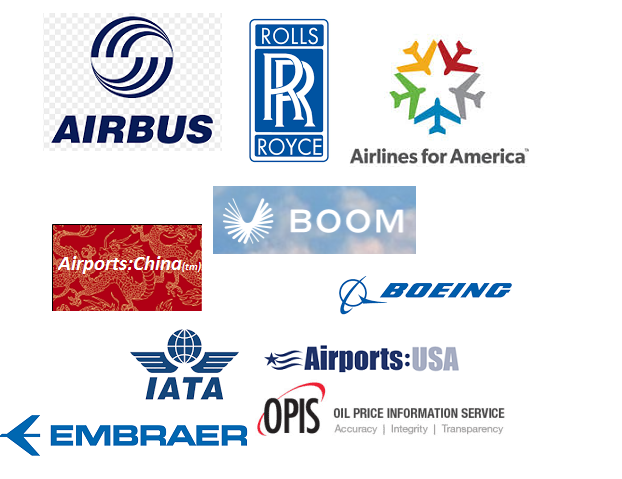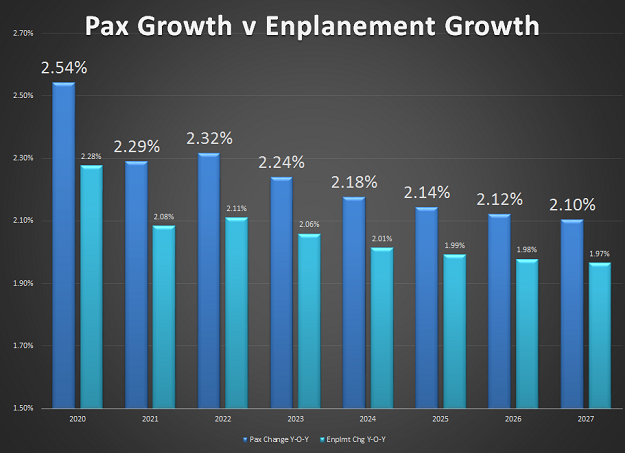Looking To The Future?
Let’s Explore Airport Traffic Trends…
On August 25-27, at the Las Vegas Wynn/Encore Resort, aviation leaders from across the globe will once again gather at the Boyd Group International Aviation Forecast Summit to discuss the future of the industry.
In the coming weeks, we’ll be announcing the complete lineup of presenters – the decision-makers from over 15 airlines, plus from aircraft manufacturers, suppliers and airports.
No Pre-Canned “Panels” – It’s going to be a very intense two days of exciting sessions. No other event concentrates on this depth of forecasting, and it’s all from the perspective of aviation leaders – and they are not straight-jacketed into pre-subject determined “discussion panels.”
They are free to tell it like they see it, and our regular attendees will attest that that’s exactly what they do.
Let’s take a look at some of the projections and forecast sessions already planned, and then focus on some of the trends that we’ll be covering specifically in the Airports:USA enplanement forecast session.
Forecast Data & Perspectives Affecting All of Aviation
Indeed, the entire event is geared to getting the future perspectives from the industry leaders from airlines, airports, manufacturers and suppliers that are shaping it.
Whether it’s a global hubsite gateway, or a rural regional airport, or engineering companies, or a law firm engaged in the aviation sector, or those in the labor sector – or any entity that is focused on aviation, the IAFS™ has global forecast sessions that deliver a comprehensive view of where the industry is headed.
Forecast perspectives will be delivered by CEOs and senior executives from over 15 airlines… not supposition, but where they each see the industry headed.
In addition, forecasts and futurist views will be delivered by:

_______________
Highlights:
Airports:USA® – Enplanement Forecasts
Today, let’s touch on some of the airport traffic issues that we’ll be discussing in regard to trends affecting airport traffic…BGI will present its ten-year forecast of airport traffic and the trends that will drive it.
We are looking at 4.0% – 5.0% growth in 2019, but slowing thereafter, and – wrenchingly for some smaller airports – “traffic access ![]() redistribution” will be a key factor.
redistribution” will be a key factor.
Slowing Growth Rates… The strong economy that has been developed over the past two years has spiked air traffic demand. However, after 2020, this will tend to level off in the future to rates in the 2.2% to 3.0% range.
Based on current fleet projections, airlines simply aren’t going to add much more capacity than that.
Shift In Passenger Routings. We see growth rates in passengers exceeding growth in enplanements. This is due to a number of factors – including expansion of ULCC carriers and a decline in small and rural airport enplanements.

More Multi-Modal Focus. Read: more automobile diversion from a number of smaller airports where a larger facility is within driving distance. The latter point above is going to be a major factor in the coming five years… consumers are finding that even a 60+ minute drive to a larger airport is a superior option than trying to shoehorn an itinerary into the 2-3 flights at a local rural airport.
It’s a consumer issue, and one that more “market studies,” local “task forces” and junkets to “speed date” events to meet with random airlines won’t reverse.
The hard fact is that passenger air transportation is all about time, and it’s a hard reality that in some cases trying to use a local airport can be far more hassle and time-consuming than alternatives in a given region. This reality is going to begin to manifest in the next 3-5 years. Regional access will eclipse local airport access at many smaller communities.
The New Role For Small Rural Airports. All that notwithstanding, America’s rural airports are a competitive advantage in the global economy, and for the few that have already and in the future will lose scheduled service (including those that today may have service that nobody uses, anyway, a.k.a. some EAS points) there is a strong role in the future national economy.
We’ll be discussing this in the session.
Increased Trans-Atlantic Routes. As we outlined at the 2018 IAFS, new technology narrow-body airliners such as the A-321NEO will open formerly unthinkable international options to non-hubsite commercial centers along the US East Coast. From Albany in the north to Jacksonville in the south, focus on assuring a viable FIS is recommended.
Increased Service At Metro-Peripheral Large Airports… Population clusters are expanding, opening new opportunities for service at larger metro-peripheral airports in some regions. The Airports:USA forecast has identified a trend toward more service at larger metro-peripheral airports inside major population regions. Airports such as Providence, Manchester will see a reverse-leakage trend return as airlines seek to capture revenues at alternative airports in a metro region.
Increased ULCC Disruption. The forecast projects that ULCC carriers will comprise over 10% of seat capacity by 2021, up from approximately 7% today. The nature of the ULCC model – which BGI compares to the “wildcatter” sector of the oil business – is to open a route and if it works, fine. If not, the route is pulled, toute suite. In all cases, the airports involved benefit with net new traffic, if even for a short period. But it causes enormous traffic volatility, too.
Rapid, Internally-Driven Airline Route Strategies. As seen in the last 12 months, network carriers are getting aggressive in expansion, based on comprehensive independent internal planning. In many cases, a new market entry had zero to do with any activity on the part of the airport itself, regardless of the post-announcement from the mayor’s office regarding how hard the community worked to attract this service, when it was essentially responding to an email requesting facility availability.
This means that the new imperative is to anticipate and identify airline market strategy changes and fleet shifts, and approach the carrier accordingly. That’s a lot different that the traditional approach focused on educating the airline on a specific market.
These are just some of the data and trends that will be discussed just at one session at the IAFS… The other sessions will be just as incisive. Plan on two days of insight that no other event gets close to. It’s one reason that the IAFS is now essentially the only true aviation forecast event.
Register Now For The Early Rate…
So, if you really want to get perspectives on the future – from all aspects that will affect air transportation in the US – register now for the International Aviation Forecast Summit. Click here to go to the IAFS registration site.
August 25-27 at the Wynn/Encore resort in Las Vegas… special room rates have been negotiated for IAFS™ attendees, too.
We look forward to seeing you!